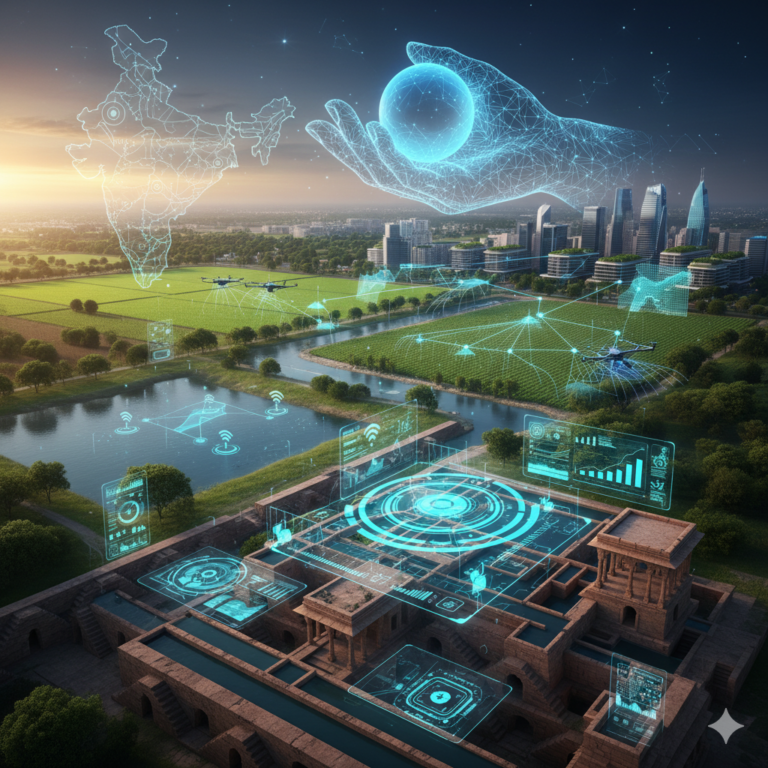Artificial intelligence has come a long way, transforming industries from healthcare and finance to entertainment and education. Yet, one critical domain remains a challenge: social interaction. A recent study by researchers at Johns Hopkins University sheds light on this issue, revealing a significant blind spot in AI capabilities—the difficulty in accurately predicting and understanding human social behavior. This limitation is particularly problematic for applications that require a high level of human interaction, such as virtual assistants, social robots, and content moderation systems.
In this blog post, we will explore the findings of the Johns Hopkins study, discuss why social understanding is such a complex issue for AI, and examine the implications for the future development of artificial intelligence.
The Study: An Overview
Researchers at Johns Hopkins University conducted a series of experiments to test how well current AI models could interpret and predict human social interactions. Their findings were conclusive: AI consistently failed to match human-level performance in tasks that required social intuition or understanding.
The study focused on several key areas:
- Predicting Intentions: AI struggled to determine the intentions behind people’s actions in social scenarios.
- Recognizing Context: AI systems failed to take context into account when interpreting behavior.
- Understanding Emotions: Despite advances in facial recognition and sentiment analysis, AI still lags behind in understanding the emotional subtleties of human interactions.
These results indicate a significant gap between machine intelligence and human social cognition.
Why Is Social Cognition So Difficult for AI?

Human beings rely on a lifetime of social learning, emotional intelligence, and contextual cues to navigate social interactions. AI, on the other hand, is largely trained on large datasets that often lack the depth and nuance of real-world social behavior.
Some of the core challenges include:
1. Lack of Common Sense Reasoning
Most AI models operate using statistical correlations rather than causal or common-sense reasoning. This makes it difficult for them to infer meaning in social situations where actions are based on unspoken norms or contextual cues.
2. Data Limitations
Datasets used to train AI are often biased, incomplete, or lack social nuance. Human interactions are multifaceted and dynamic, making it difficult to capture the essence of social behavior in data.
3. Static vs. Dynamic Understanding
AI models typically analyze snapshots of data, whereas human social behavior is dynamic and evolves over time. This temporal complexity is hard to model.
4. Ethical and Privacy Constraints
Collecting data on real-world human interactions raises significant ethical concerns, especially in private or sensitive settings. This limits the data available for training AI models in social domains.
Real-World Implications of the Study
The Johns Hopkins findings have broad implications for several real-world applications:
1. Virtual Assistants
AI assistants like Siri, Alexa, and Google Assistant still struggle with understanding tone, emotion, and context. This limits their ability to provide empathetic or socially aware responses.
2. Social Robots
Robots designed for elder care, customer service, or companionship need to interpret social cues effectively. Failing to do so can lead to awkward or even harmful interactions.
3. Content Moderation
AI-driven moderation tools often misinterpret context, leading to wrongful bans or failure to detect harmful content. This highlights the importance of human oversight in these systems.
4. Education and Therapy
AI tools are increasingly being used in education and mental health. Without a proper understanding of social dynamics, these tools may be less effective or even counterproductive.
Toward More Socially Aware AI
To overcome these challenges, researchers and developers need to rethink how AI is designed and trained. Several promising avenues are being explored:
1. Integrating Social Psychology
Bringing in concepts from social psychology can help AI systems better understand human behavior. For example, modeling theory of mind—the ability to attribute mental states to others—could enhance AI’s social capabilities.
2. Multimodal Learning
Combining data from multiple sources (e.g., video, audio, text) can give AI a more holistic understanding of interactions. This mimics how humans use various senses to interpret social cues.
3. Human-in-the-Loop Systems
Incorporating human feedback into AI decision-making can improve accuracy and adaptiveness in social contexts.
4. Ethical AI Design
Ethical considerations must guide the development of socially aware AI to avoid reinforcing biases or invading privacy.
Case Studies and Applications
1. Companion Robots in Japan
Japan has pioneered the use of social robots in elderly care. While useful, these robots often fail to interpret emotions correctly, leading to limited effectiveness. Incorporating better social cognition could make them more helpful.
2. AI in Mental Health
Apps like Woebot use conversational AI to support users with mental health challenges. Their success depends heavily on the AI’s ability to understand emotional and contextual cues.
3. Customer Service Bots
Many companies use chatbots for customer service. While efficient, they often falter in emotionally charged interactions. Improved social cognition could enhance customer satisfaction.
Challenges and Ethical Considerations
Developing socially aware AI is not without its challenges:
- Bias and Discrimination: Poor understanding of social context can lead to biased outcomes.
- Privacy Concerns: Capturing social interactions often requires sensitive data.
- Transparency: Users must understand how AI systems interpret social cues.
- Accountability: Who is responsible when an AI misinterprets a social situation?
These are critical questions that must be addressed as the field progresses.
Future Directions
The Johns Hopkins study serves as a wake-up call for the AI community. While the technical progress in AI is commendable, there’s a growing need to focus on human-centric design principles. Some of the future directions include:
- Longitudinal Studies: Observing AI performance in long-term social interactions.
- Cross-Disciplinary Research: Collaborating with social scientists, ethicists, and psychologists.
- AI Regulation: Developing standards for AI behavior in social domains.
- Open Datasets: Creating ethically sourced, rich datasets for training.
Conclusion
The road to truly intelligent machines goes beyond data and algorithms—it requires an understanding of what makes us human. The Johns Hopkins research highlights a critical gap in AI development that must be addressed for these systems to become truly integrated into our social lives.
As AI becomes more embedded in daily life, the need for social cognition will only grow. By acknowledging these limitations and actively working to overcome them, we can build AI that not only understands what we say, but why we say it—and that, perhaps, is the most human trait of all.









+ There are no comments
Add yours